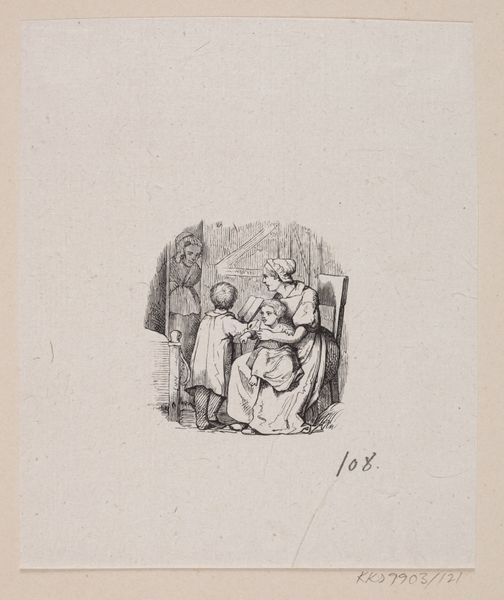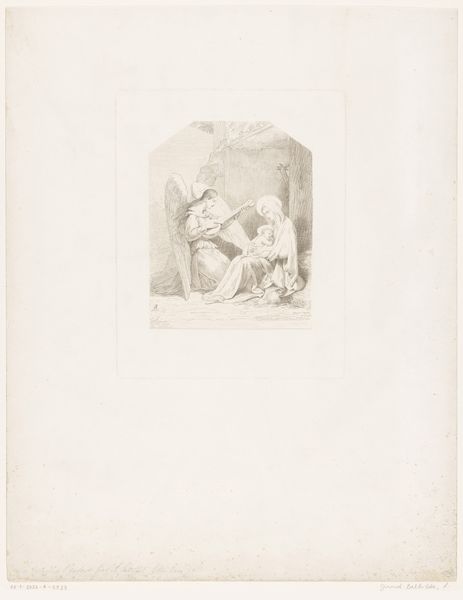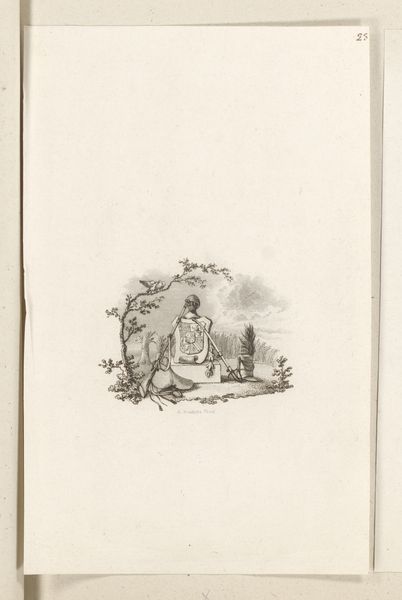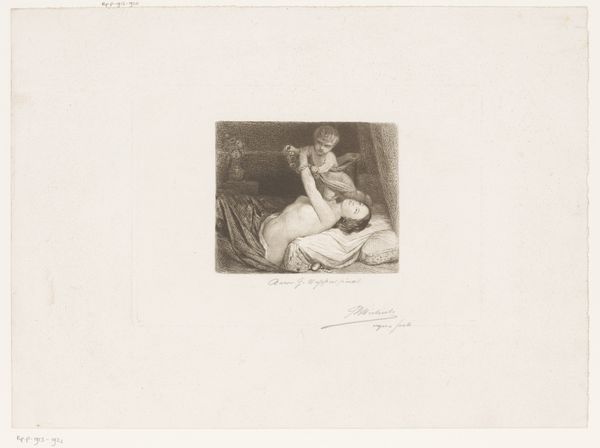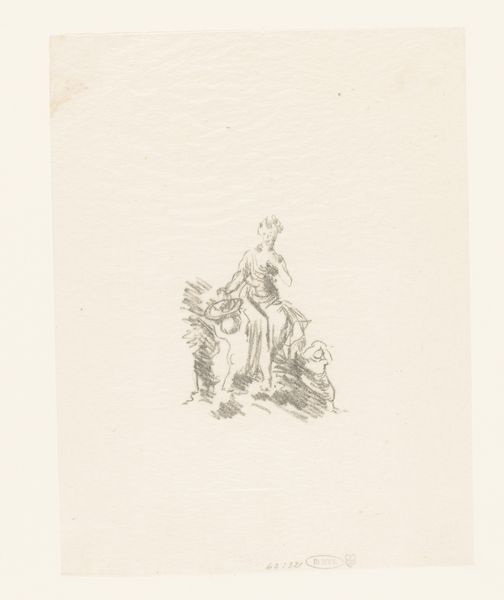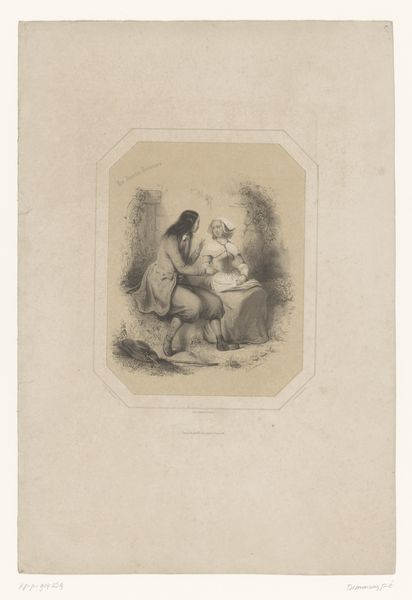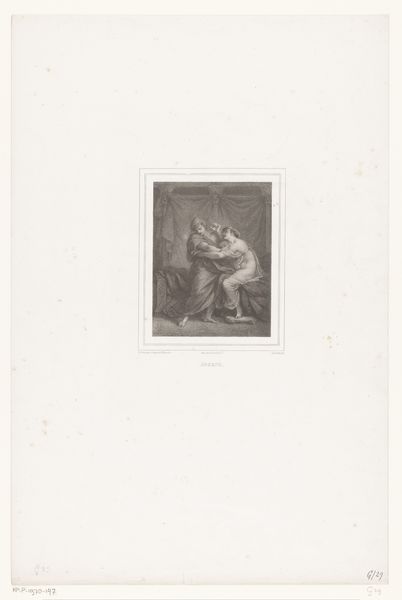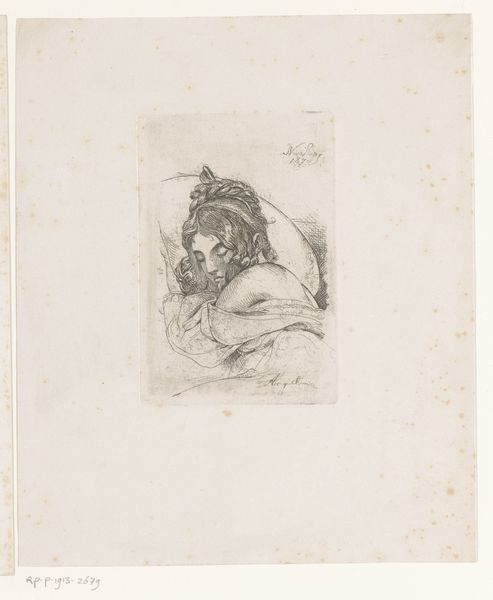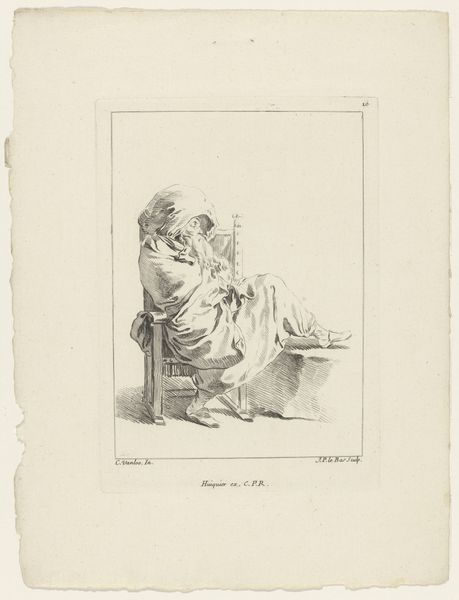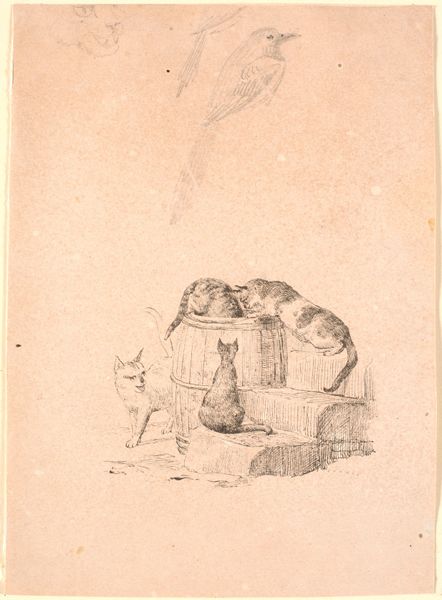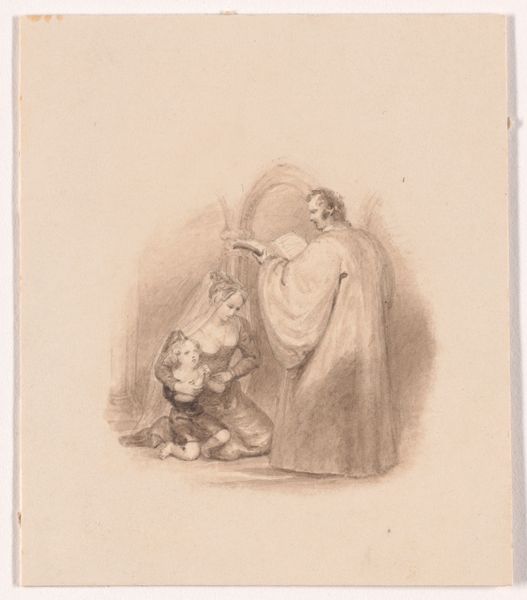
Illustration til "Den lille Pige med Svovlstikkerne" i H.C. Andersen, "Eventyr og Historier", Bind 2 1870 - 1873
0:00
0:00
Dimensions: 124 mm (height) x 103 mm (width) (bladmaal)
Editor: This is an etching by H.P. Hansen, from between 1870 and 1873, illustrating Hans Christian Andersen’s “The Little Match Girl.” The starkness of the image, the small figure huddled against the wall, it all feels so desolate. What jumps out at you? Curator: What strikes me is how this image, created within a specific cultural context of 19th-century Romanticism, speaks to enduring issues of social inequality. Consider the historical backdrop: Andersen's tale itself is a critique of societal indifference to poverty. Hansen’s visual representation reinforces this, but how does it resonate today? Editor: I guess it shows how some problems never really go away. Even now, poverty is such a massive issue for girls and women especially. It hits you harder seeing a child in that situation. Curator: Precisely. And consider the artistic choices. The style of Romanticism, with its focus on emotion and the individual, amplifies the girl’s vulnerability. The starkness isn't just aesthetic; it underscores her isolation and the systemic failures that lead to her tragic fate. What elements of intersectionality do you see in the art? Editor: Well, there’s class, of course, and gender. I hadn't considered it, but even something as simple as where she's placed in the image could say something. She's pushed into a corner; she's made small in the huge, empty frame. Curator: That’s insightful. It's vital to recognize that art like this does more than just depict; it demands we confront uncomfortable truths and ask ourselves what actions are necessary to foster equity and justice. How can we, as viewers, transform empathy into activism? Editor: It definitely gives you a lot to think about. Thanks for pointing out the connections I didn't make. Curator: The pleasure is mine. Keep using that critical lens. It is a powerful tool for understanding and shaping a more equitable world.
Comments
No comments
Be the first to comment and join the conversation on the ultimate creative platform.
